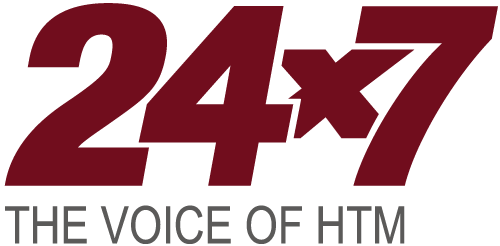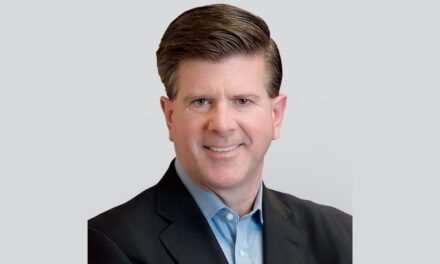By Aine Cryts
Bhaskar Iduri, CCE, CHTM, the 2023 AAMI “HTM Leadership Award” winner, says his interest in the Association for the Advancement of Medical Instrumentation (AAMI) grew organically. Put simply, Iduri was asked to serve on AAMI’s Technology Management Council, a 26-member advisory committee of HTM thought leaders that advances and supports the field.
The Technology Management Council operates based on AAMI’s strategic plan and the HTM Road Map set by its leadership team. According to AAMI, the group’s major priorities are strengthening and bolstering the HTM field by finding creative ways to promote HTM careers to outside organizations, developing materials to highlight HTM as a desirable profession to students and young professionals, creating education programs to develop the existing workforce, and producing resources to promote best practices.
Leading an Industry
Serving with this group is how Iduri came to meet notable industry experts, such as Malcolm Ridgway, PhD, former chief clinical engineer at ARAMARK Healthcare Technologies, and Stephen Grimes, FACCE, FAIMBE, FHIMSS, AAMIF, managing partner and principal consultant at Strategic Healthcare Technology Associates. Staying engaged with AAMI also inspires Iduri’s interest in writing articles and speaking about the Technology Management Council’s work.
The concept of reliability-centered maintenance (RCM), which got its start in October 2015 with AAMI’s Maintenance Practice Task Force (MPTF), is one of the results of the council’s work. The task force focused on developing a “scientifically sound, RCM-based methodology for determining which types of medical devices are made safer by periodic planned maintenance (PM),” wrote Iduri and his co-authors about their work in the July/August 2018 issue of Biomedical Instrumentation & Technology.
Iduri and his co-authors offered seven steps for implementing a simple RCM-based AEM program in that article. These steps include:
Step 1. Create a modified version of the facility’s medical equipment inventory by removing the four types of devices that CMS specifically states can’t be included in an AEM program.
Step 2. Deploy the results of the MPTF’s phase 1 risk assessment, or a version that appropriately identifies the facility’s devices that are potentially at high PM-risk devices. The authors noted that facilities should pursue maintenance of these devices in accordance with the manufacturers’ recommendations.
Step 3. Create an AEM policy that describes the decision-making process behind selecting the items that are considered potentially high PM-risk devices. The experts advised including a section on alternate maintenance strategies that could be used on the devices included in the AEM program.
Step 4. Decide on the appropriate devices to include in the AEM program policy. The co-authors recommended that corrective actions that should be taken should be included in the instance that the apparent level of PM-related safety is rendered unacceptable.
Step 5. Include a policy covering the process used to confirm the levels of PM-related safety achieved by the alternate maintenance strategies used in the program that are considered acceptable. The co-authors noted that this step should also cover the corrective actions that should be taken if the apparent level of PM-related safety becomes unacceptable.
Step 6. Create materials for training relevant hospital staff on how to explain the decision taken to place various devices in the AEM program, along with the evidence used to support the decision.
Step 7. The qualifications of personnel managing the AEM program and performing maintenance activities should also be included in the policy.
Iduri and his task force colleagues also wrote an article in the September/October issue of Biomedical Instrumentation & Technology that further expanded on their rational approach to efficient equipment maintenance.
In May 2020, AAMI championed a commentary written by Iduri and his former colleagues at Irvine, Calif.-based Renovo Solutions called “Applying QMS Principles to a Medical Equipment Management Program.” The article, published in the September/October 2019 issue of Biomedical Instrumentation & Technology, covered ways that HTM teams can develop a quality management system “by making minor changes to existing medical equipment management program practices.”
Advocating for His Patients
These days, Iduri serves as IT director of clinical engineering at San Diego-based Sharp HealthCare. He’s deeply involved in the health system’s move to a single electronic health record (EHR) platform in the three-year project that’s expected to commence in 2024. Iduri’s primary role is to understand and manage the ability to connect Sharp HealthCare’s various medical devices to the EHR.
Four of the questions Iduri asks himself since getting involved in the project in May 2022 include:
- “What’s the inventory of existing medical devices?”
- “How old are the medical devices and where are they in terms of end-of-life?”
- “What is the functionality of the medical devices?”
- “What are the current gaps associated with integrating the medical devices with the health system’s EHR? Or is the technology so obsolete that the medical device can’t be integrated with the EHR?”
When integrating the health system’s medical devices into the EHR, Iduri says he focuses on one goal: providing the best care to patients. “Why do I care [about this work]? It’s because of patient safety and also to promote a better patient experience when they’re in the hospital,” he says.
After all, he says, “When you’re in a hospital, you would rather stay in your bed when we’re [capturing] your vitals…you don’t want to have to move into another room because a medical device isn’t connected with the EHR.”
“We want a situation where everything is seamlessly integrated in [the EHR] so that a physician or primary care provider can have a more collaborative discussion with the patient, instead of trying to go through 10 different reports and trying to consolidate them [to assess the patient’s] health status,” says Iduri.
He strikes a similar tone when asked about leading Renovo Solutions’ effort to achieve ISO 9001 certification in clinical engineering in 2018. “This work can translate to a very high customer rating because all of your customers should love the product or service,” Iduri says. “ Your leadership team is heavily invested in the quality of the experience they’re offering.”
Career Reflections
For three years, Iduri taught a class on FDA medical device regulations on a part-time basis at Southern California Institute of Technology in Anaheim. He remembers the time fondly. “I was just newly married and had a lot of energy,” he reminisces.
The class, Iduri says, met in the evenings to accommodate working professionals. “To me, it was a learning experience,” he says. “I taught students who were also in the same profession, and I got to hear their thought processes while having an opportunity to digest the whole FDA infrastructure.”
Topics covered in the class included how medical devices go through clinical trials. He drilled down into how medical devices are approved, surveillance regarding the safety of medical devices, the post-approval market entry of medical devices, and about ways the FDA receives notifications when a device malfunctions. The class also covered how recalls and safety alerts work, says Iduri.
Iduri may no longer work in the classroom, but he still has lessons to impart to the next generation of HTM professionals. Here are four nuggets of wisdom from 2023’s AAMI HTM Leadership Award winner:
- Stay relevant. Healthcare technology is constantly evolving, so biomeds should keep up with the latest industry trends.
- Maintain community. Sharing knowledge and expertise with others is a valuable way to contribute to the HTM sector.
- Consider teaching. After all, he says, teaching can be a rewarding experience that helps students learn about new technologies and how they can be used to improve patient care.
- Keep high standards. Quality management is essential for ensuring the safety and effectiveness of healthcare technologies.
Asked how he feels about winning AAMI’s most recent accolade, Iduri describes himself as excited, surprised, and overwhelmed. “I feel overwhelmed and really thankful to the whole nominating group and the committee who chose me this year.”
Aine Cryts is a contributing writer for 24×7. Questions and comments can be directed to 24×7 chief editor Keri Forsythe-Stephens at [email protected].





